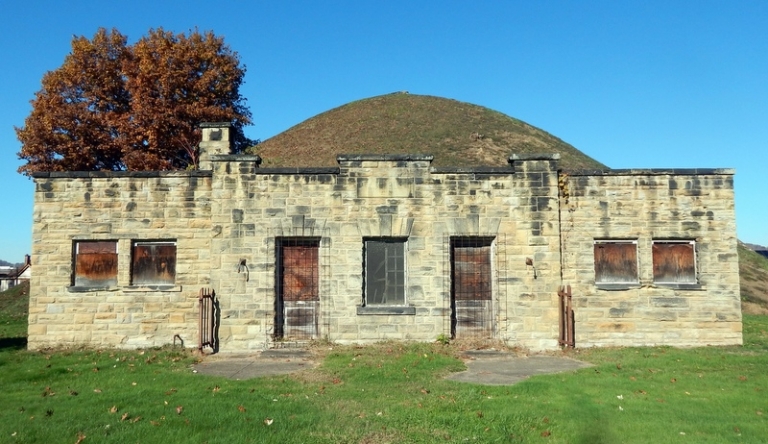
When tourists arrive in Moundsville, West Virginia, they often come to see the massive Grave Creek Adena burial mound or tour the infamous West Virginia Penitentiary. Few may notice the small stone structures at the base of the mound across from the prison or know of the link between them.
The small sandstone structure is almost forgettable to those who don’t already know of its significance. Neglected, its windows boarded, it cuts slightly into the mound itself. It is, however, the original mound museum, established by the community, and the first home of the West Virginia Archaeological Society.
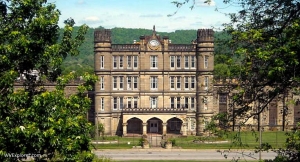
The museum would have never been constructed were it not for the efforts of local groups like the Rotary Club and Marshall County Historical Society, which inspired members to preserve and promote the mound. These members included local newspaper editors, prison staff, and Delf Norona, who became so important to West Virginia archaeology that his name graces the modern museum at the mound.
At the groundbreaking on May 11, 1937, a local newspaper reported that the museum would include exhibits of “mound-builder relics” donated by local collectors, as well as a desk for visitors to mail souvenir postcards. In the same article, Dr. C. F. McClintic, the warden at the prison, stated it would be “constructed of stone patterned after the well-house on the east side of the mound.”
This masonry pattern likely refers to the diagonally-cut sandstone blocks and keystones found only in the original part of the old museum, as well as in two smaller outbuildings. The first outbuilding, shown above, was likely a utility room or restroom, while the purpose of the second is unknown. I believe this may be the original well house.
When the mound was purchased by the state in 1909, it was put into the custody of the West Virginia Penitentiary, located only 400 feet from the mound itself. Inmates provided labor for ground maintenance and the construction of the museum. Stones that were unusable for the prison wall were repurposed for the museum. Thus, the museum took on the architectural characteristics of the Gothic Revival prison, such as its small corner towers.
Interest in the archaeological site varied from warden to warden, which delayed the museum’s completion. Although the building was finished in 1941, the onset of World War I drew attention away from its development, and it became a gift shop with few of the originally planned exhibits.
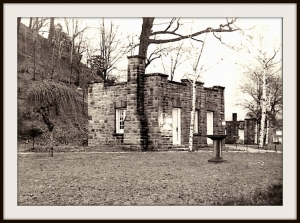
It was not until the West Virginia Archeological Society stepped in that the museum’s purpose was fulfilled. Details about the history of the museum project can be found in October 1950 and June 1951 issues of the West Virginia Archeologist. However, the museum's connection to the prison continued after construction, and inmates created souvenir items sold in the gift shop.
According to a 1994 report for the Moundsville Historic Landmarks Commission, some of the artifacts displayed in the museum were collected by prisoners during their work assignments and turned over to the prison physicians.
As a member of the Marshall County Historical Society, Delf Norona had chiefly been interested in West Virginia’s postal history. However, when others began to talk about a museum at Grave Creek Mound, the landmark caught his attention.
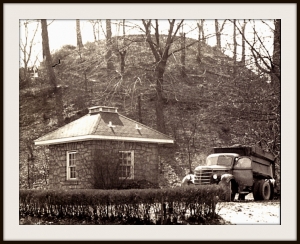
Norona quickly became a prolific amateur archaeologist and worked with professionals to document the state’s prehistory. He co-founded the state archeological society in 1949 and adopted the museum as its first project.
By this time, it was clear that the structure was too small for proper exhibits, and so in 1949 the prison and society broke ground on a u-shaped addition, which would further impact the mound’s base.
Norona supervised archaeological excavations in advance of construction and became the museum’s curator until his death in 1974. He is even rumored to have placed a time capsule somewhere inside.
As research progressed, new exhibits were added to the old museum in a symbiotic development. Today, this symbiosis continues with archaeology meetings and exhibits found at the modern museum that now bears Norona’s name.
It is clear that the old museum at Grave Creek Mound is integrally linked to the development of West Virginia archaeology as a whole, and may even be the only physical structure directly associated with its early history.
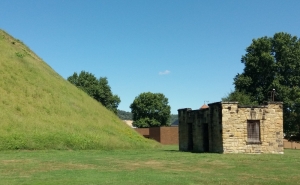
The theme for this year’s meeting of the society was the preservation of Grave Creek Mound. The continued protection of this significant site is well-deserved, though the old museum is almost in ruins. A collapsed asphalt roof has allowed extensive water damage to the interior, which is now inaccessible to visitors.
These neglected stone structures represent an important part of our past—not just for Moundsville and the penitentiary, but also West Virginia’s vital role in American archaeology. Adding insult to injury, the state had plans to demolish the old museum as recently as 2018, though local historical societies have fought to protect it as a “reminder of how delicate and fleeting that all proof of history can be.”
The author would like to thank the staff at the Grave Creek Mound Archaeological Complex, members of which provided photographs and information about the history of the old museum. To learn more about the historic structures, visit its historic property inventory form.
Please share your thoughts about the future of the old Grave Creek Mound museum with the Division of Culture and History at Andrea.d.thompson@wv.gov.
Old penitentiary now attracting more than 30,000 annual visitors
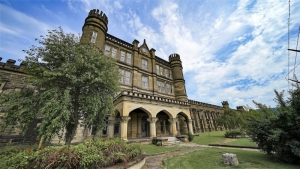
More than 30,000 visitors now tour the old West Virginia Penitentiary at Moundsville every year, and officials say traffic is expected to increase as the landmark enters its 23rd year as a tourist attraction. The adjacent Grave Creek Mound and nearby Grand Vue Park and the Palace of Gold, Park said the penitentiary is attracting a significant audience to the upper Ohio Valley. Read the full story here.




























